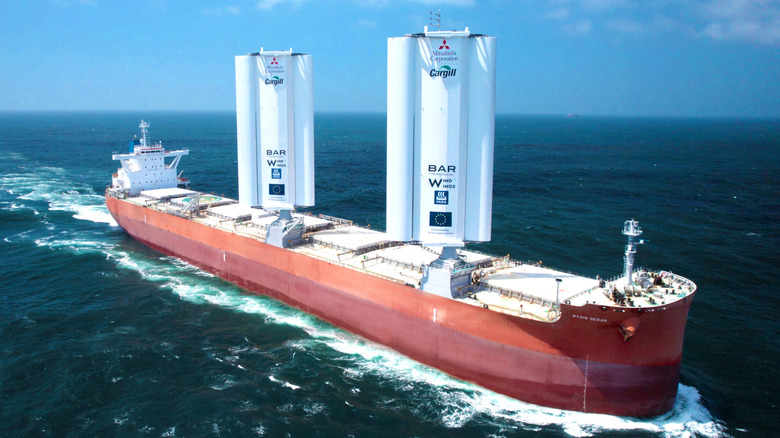This Ship Uses 2 Sails & Wind-Assisted Propulsion Tech To Cross The Ocean - Here's How It Works
For most of seafaring's history, the primary means of propelling a ship was with sails. However, most modern ships no longer have sails, instead relying on combustion power. Using diesel engines means that ships can travel faster and more predictably than they could on wind power, but it also produces huge amounts of emissions. According to OECD data, the shipping industry was responsible for 858 million tonnes of CO2 emissions globally in 2022, over 100 million tonnes more than the aviation industry.
A British marine design company, BAR Technologies, has developed a unique system aimed at reducing the emissions of commercial shipping. Just like traditional sail ships, the system harnesses the power of wind but combines tradition with modern technology to reduce the amount of fuel that a combustion powered ship uses. The first ship to receive this system was the Pyxis Ocean, which successfully completed its maiden voyage in 2024. It was fitted with a pair of BAR's WindWings, which are solid sails that use sensors to automatically adjust their position in reaction to variations in wind speed and direction.
Rather than requiring all-new ships to be built, the WindWings are designed to be able to be retrofitted onto existing ships. When they are raised, they reduce the amount of thrust required from the ship's combustion engine, allowing the ship to continue sailing at its normal speed while reducing the amount of fuel it consumes.
The technology has some limitations
BAR Technologies CEO John Cooper said that the ship saved as much as 11 tonnes of fuel per day on its maiden voyage. However, the voyage also highlighted several issues preventing wider adoption of Wind Assisted Propulsion (WAP) technology. One of the major issues was that many ports were not equipped to accommodate such a ship. Fixing the issue is not straightforward and may require certain ports to be adapted — or they may simply remain off-limits for ships that have WAP technology fitted.
Many of the biggest ships in the world are also container ships. Fitting sails would not be practical for these ships, as they would get in the way of the cranes that load and unload the ships in port. Given these limitations, it's unlikely that WindWings will become a regular sight on ships in the immediate future, although they may eventually play a bigger role in lowering the emissions of the industry. Until then, most ships will continue to use diesel engines as their primary source of power.

